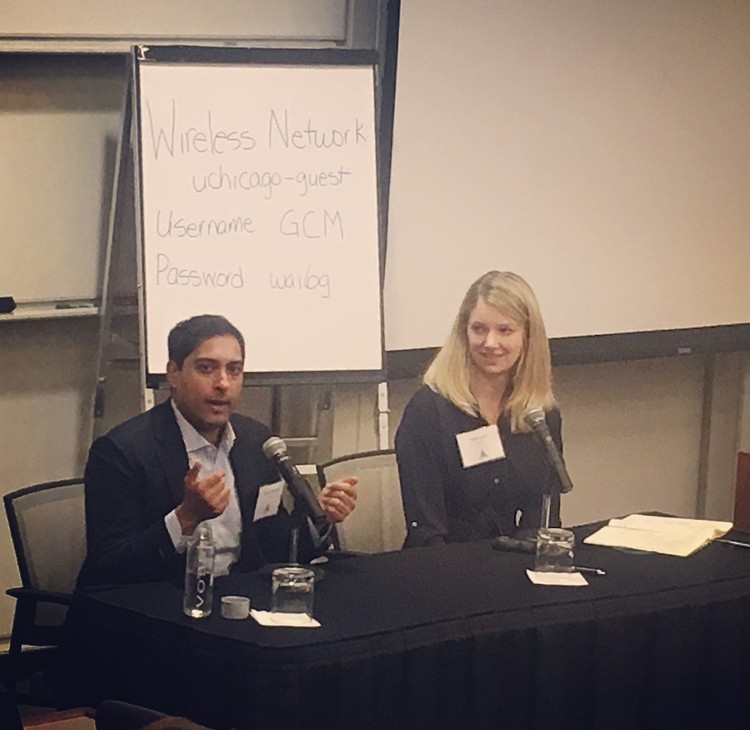
Artificial Intelligence: Moving Legal Research (and Innovation) Forward
A Guest Post By Anand Upadhye, VP Business Development at Casetext
Often when we hear about artificial intelligence in legal it’s addressed from a high-level, philosophical perspective that sometimes ignores the immediate use cases for practicing lawyers.
Flying in the face of this, AI in legal took a major step forward on June 20 at the University of Chicago’s Gleacher Center where leaders from law firms, legal technology providers, law schools and in-house legal departments gathered to examine AI’s convergence within specific areas of legal, namely: e-discovery, contract review, contract analysis, litigation, and of course, legal research.

There are roughly 900 legal tech startups in the legal ecosystem all attempting to improve how law is practice from solo shops to the biggest firms in the world. Among these tech providers, AI-based tools are becoming more widely accepted and better understood among lawyers.
In an encouraging sign, more corporate clients are demanding their outside counsel use these technologies to be more accurate, more innovative and more efficient.
This three-value proposition alongside the past, present and future of legal research was the main theme of my panel presentation during Giant City Media’s AI conference in Chicago.
My co-panelist, Nina Jack of Fastcase, expertly contributed her perspective on her company’s significant contributions to this area as well.
First, let’s look at the past. For decades, tools like Westlaw and LexisNexis were the only game in town; it’s what we learned to use while still in law school and then later as an associate at a law firm. Entire classes in law school are built around proficiency with these tools. Despite this, any attorney who has spent hundreds of hours conducting legal research knows firsthand that the process and the tools are far from optimal.
AI wouldn’t need to be applied to legal research if legal research was actually perfect as it stands. We know this is true because if it weren’t, we litigators wouldn’t be missing cases as regularly as we do. Pure keyword-based search is no longer cutting it – these are incomplete approaches that are unable to effectively do the job. Yet, AI is helping us build contextually-aware tools that still require a lawyer’s judgement, allowing them to do their jobs well andprovide better outcomes for clients.
We are witnessing real-world applications of AI by early adopters like Ogletree Deakins and other prominent firms, who discussed the ways their firms are leveraging AI and technology to become more efficient and deliver greater value to clients.
Besides efficiency and accuracy, AI within legal is also closely associated with marketing and business development strategies. There is a a certain level of cache associated with the adoption of AI-based legal tech tools from a co-branding perspective. (As an example, a relatively new client of ours saw a press release announcing that opposing counsel from another firm had adopted our technology, which compelled that firm to sign on with Casetext’s legal research assistant, CARA AI.) Firms don’t want to get left behind – or be outdone by a competitor.

By the end of 2019, Microsoft is aiming to move 90% of the company’s legal work to alternative fee arrangements. We’ve heard for years – even decades – that the billable hour is “dead.” As clients push for greater efficiency and innovation from outside counsel, AFAs are clearly the future of the business of law. Clients are demanding it; for law firms to keep their business, they need to use the tools that we’ve built.
As for the future of legal AI, imagine a world where when you do legal research and your legal research tool knows what cases your firm has worked on in the past…it knows whether the client you’re representing has special circumstances, like a PR crisis or an upcoming IPO; it knows what work experience you and your colleagues at your law firm had before law school and after law school; it knows about opposing counsel and what they worked on before and after law school. The list goes on.
Clients dictate this change and demand a more efficient and accurate way to do legal research, among other tasks associated with litigation. AI is playing a major role in getting us there. We are at a point in which legal research must become a completely context aware-tool that will lead to better briefs, better outcomes – and better responses to RFPs. I think most of us in the room agreed that lawyers will not be replaced by robots, not today, not ever.
AI applied to legal is the clear path forward. This is the direction the industry is going. And it can’t come soon enough.
Anand Upadhye is vice president of business development at Casetext. Previously, he practiced law for six years, first as a prosecutor and then as a litigator at a large firm.
3 Trackbacks / Pingbacks
Comments are closed.